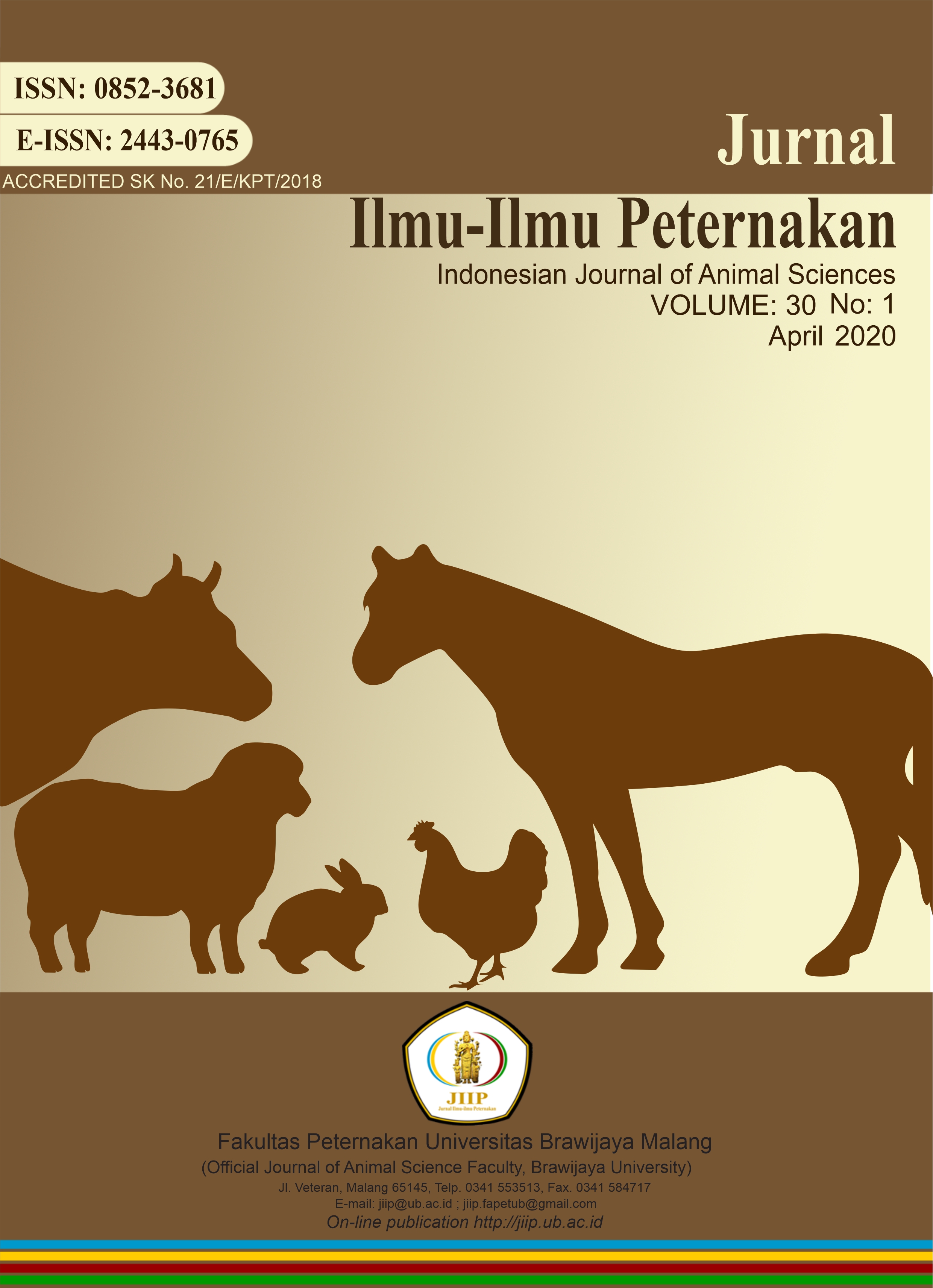Analysis of economic value and livestock farming model based on the integration of cattle-palm oil plantation on peatlands in Pasangkayu regency, West Sulawesi, Indonesia
DOI:
https://doi.org/10.21776/ub.jiip.2020.030.01.10Keywords:
Analysis of economic value, Integration of palm-oil, Pasangkayu Regency, Sustainable agriculture systems.Abstract
Pasangkayu Regency is one of the regencies in West Sulawesi that has the potential to apply the concept of sustainable agriculture through palm oil plantations. One of the efforts in developing sustainable farming systems is by integrating agriculture and livestock farming. The purpose of this study is to analyze the economic value and livestock model based on the integration of palm and cattle on peatlands in the Pasangkayu Regency. The study was conducted in palm oil plantations on peatlands in Pedongga District, Pasangkayu Regency from June to August 2018. Data collection techniques were carried out by interviewing and distributing questionnaires directly to 45 informants. The analysis was performed including economic analysis, analysis of sustainability data, analysis of Multiple Goal Programming (MGP), also the drafting of the index and the status of sustainability of integrated palm-cattle. The economic value of the farmers in integrated farming systems of cattle-palm on peatlands in the Pasangkayu Regency showed by the income earned was Rp. 11,069,436.18 / year and much higher than the economic value without integration which the income was only Rp. 916,982.73 / year. The integration-based livestock farming model observed from the ecological, economic, social and cultural, and the legal and institutional dimensions were categorized as sustainable, while the infrastructure and technology dimensions were still below sustainable values. Therefore, the overall integration of palm and cattle on peatlands in the Pasangkayu Regency was categorized as sustainable.
References
Arora, S.P. 1995. Pencernaan Mikroba Pada Ruminansia. Cetakan Kedua. Diterjemahkan oleh R. Murwani. Editor B. Srigandono. Gadjah Mada University Press, Yogyakarta.
Bangun, R. 2010. Pengembangan Sistem Integrasi Sapi-Kebun Kelapa sawit Dalam Peningkatan Petani di Provinsi Riau. Badan Penelitian Dan Pengembangan Provinsi Riau.
Hidayat, M.I., dan Adinda Anina A Hidayat, 2017. Analisis Kelayakan Usaha Integrasi Sapi Potong Dan Perkebunan Kelapa Sawit Di Desa Karang Taruna Kabupaten Tanah Laut, Kalimantan Selaan. Makalah Seminar Nasional Peternakan 3 tahun 2017. Universitas Hasanuddin Makassar, 18 September 2017
Jaelani, A., A. Gunawan, dan I. Asriani. 2014. Pengaruh Lama Penyimpanan Silase Daun Kelapa Sawit terhadap Kadar Protein dan Serat Kasar. Universitas Islam Kalimantan, Banjarmasin.
Lubis, A. U., 2008. Kelapa Sawit (Elaeis guineensis Jacq) di Indonesia Edsi ke-2. Pusat Penelitian Kelapa Sawit. Medan.
Mathius, I.W. 2008. Pengembangan sapi potong berbasis industri kelapa sawit. Pengembangan Inovasi Pertanian. 1:206-224.
Nurhayu, A., Ishak, A.B.L dan Andi, E. 2013. Pelepah dan Daun Sawit sebagai Pakan Substitusi Hijauan pada Pakan Ternak Sapi Potong di Kabupaten Luwu Timur Sulawesi Selatan. Balai Pengkajian Teknologi Pertanian Sulawesi Selatan, Makasar.
Soehadji, 1993. Kebijakan Pembangunan Peternakan Untuk Pengembangan Pedesaan. Makalah Yang Disampaikan Pada Lustrum VI Faterna Unand, Tangal 21 November.
Sudarsono. 1995.Pengantar Ekonomi Mikro.LP3ES:Jakarta
Sugiyono. 2012. Metode Penelitian Kuantitatif Kualitatif dan R&D. Bandung: Alfabeta.
Yamin, M., Muhakka, dan A. Abrar. 2010. Kelayakan Sistem Integrasi Sapi dengan Perkebunan Kelapa Sawit di Propinsi Sumatera Selatan. Jurnal Pembangunan Manusia, X (1)
Zahari, W.M., Hassan, O.B., Wong, H.K and Liang, J.B. 2003. Utilization of oil palm frond-based diets for beef cattle production in Malaysia. Asian-Aust J Anim Sci. 16:625-634.
Downloads
Published
How to Cite
Issue
Section
License
Authors who publish with this journal agree to the following terms:- Authors retain copyright and grant the journal right of first publication with the work simultaneously licensed under a Creative Commons Attribution License that allows others to share the work with an acknowledgment of the work's authorship and initial publication in this journal.
- Authors are able to enter into separate, additional contractual arrangements for the non-exclusive distribution of the journal's published version of the work (e.g., post it to an institutional repository or publish it in a book), with an acknowledgment of its initial publication in this journal.
- Authors are permitted and encouraged to post their work online (e.g., in institutional repositories or on their website) prior to and during the submission process, as it can lead to productive exchanges, as well as earlier and greater citation of published work (See The Effect of Open Access).
















